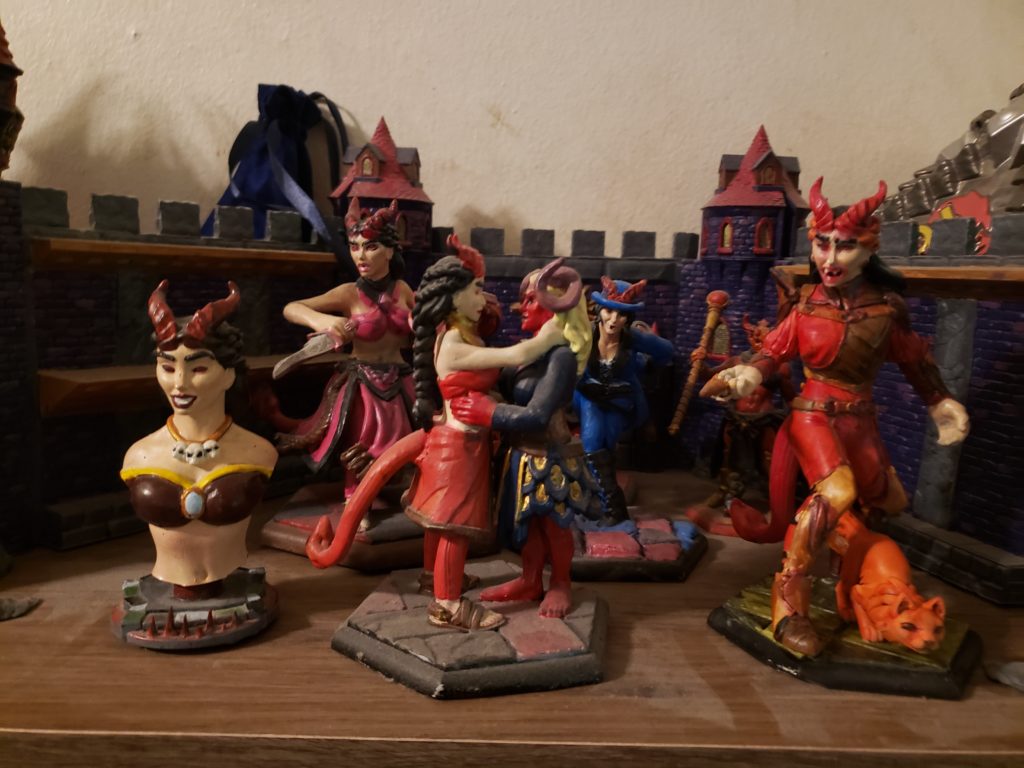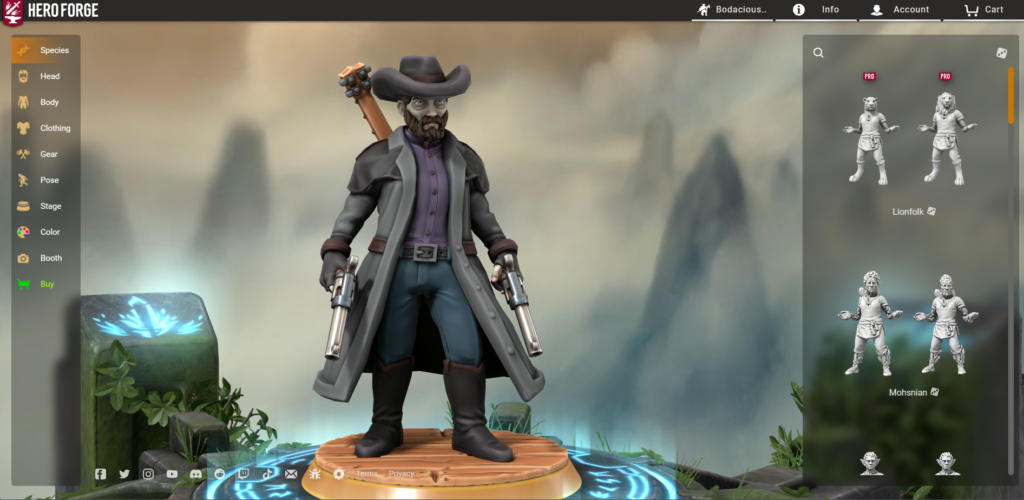
Crafting and Printing Resin Miniatures: A Fantastic Hobby
In recent years, 3D printing technology has evolved tremendously, allowing hobbyists and professionals alike to bring their imaginations to life with remarkable precision. I got into resin 3D printing when covid was at it’s peak, and this is one covid hobby I’ve stuck with.
One area where this technology shines is in the creation of miniatures for RPGs and personalized book characters. Crafting and printing resin miniatures is a fun and relaxing hobby. Especially during the painting process, it’s easy to get into a medative, Zen state. If you’re a writer or RPG player keen on designing and printing your unique miniatures, this guide is for you. Let’s delve into the exciting world of resin 3D printing.
Understanding Resin 3D Printing

Resin 3D printing leverages liquid resin which hardens when exposed to ultraviolet light in a process called photopolymerization. This process allows for intricate details and smooth surfaces, making it a favorite for miniature printing. That’s the basic explannation. If you’re curious about exactly how it works, YouTube has a lot of good videos on the topic.
Why Choose Resin 3D Printing for Miniatures
When it comes to miniature printing, the high resolution and fine details achievable with resin 3D printers make them an excellent choice. They can recreate delicate features, like the facial expressions of a book character or the intricate armor of an RPG hero, bringing depth and realism to your miniatures.
If you get a resin 3D printer, you’ll want a mono printer with a high resolution for the fastest printing and the greatest detail.
Designing Your Miniatures with Hero Forge
Hero Forge is a top platform in creating your own unique miniatures. It is a website that facilitates the design of your custom 3D character minis. You can craft unique characters by selecting from a wide range of options for physique, clothing, accessories, and poses, tailoring your miniature to exact specifications. You can even pose your characters yourself and now, it allows you to sculpt face details and create large or subtle changes in a character’s expressions.
While you can order the physical version of your designed miniature from Hero Forge, an economical alternative is purchasing the 3D file of your design for less than half that price. This file can then be used to print your miniature via a 3D printer, saving you money while affording you the joy of physically printing your creation.
You can also change the print size. Personally, when I print Hero Forge minis to use in Dungeons and Dragons, I print them at 115%, as their minis are at 28mm size, and I like mine at 32mm. I also print larger versions at 300% or 400% size so I have beautiful figurines of my favorite characters, which I then paint with miniatures paints.
Getting Started with Resin 3D Printing
Before you start printing, you’ll need a resin 3D printer, and appropriate resin, and a well-ventilated space to work in. You’ll also require protective equipment like nitrile gloves and masks to safely handle the resin, including the printed figures, until they’re cured. Here are the steps to get you started:
1. Design Your Miniature: Begin by designing your miniature on Hero Forge. Once satisfied, purchase the 3D file.
2. Prepare Your Printer: Ensure your printer is clean and calibrated correctly to avoid any printing issues.
3. Supporting and Slicing the Model: Before printing, you will use slicing software to prepare your 3D model. This software allows you to create supports, which are easy to remove after a print and allow the model to print properly. It then slices the model into layers and translates it into instructions for the printer. I highly recommend Lychee Slicer. It makes creating supports a snap (pun intended) and gives lots of options for how to slice the file so your print looks incredible.
4. Printing: Load the slice into your printer and initiate the printing process. This could take several hours depending on the complexity and size of your miniature.
5. Post-Processing: After printing, your miniature will require post-processing, which includes washing in isopropyl alcohol (unless you use water washable resin, which I do, and which works great!) and curing under UV light to harden the resin. I also recommend getting a washing and curing station, which makes this step much easier.
Painting Your Miniature
Once your miniature is printed and cured, it’s time to bring it to life with colors. Use acrylic paints to detail your figure, bringing out the intricate designs and features.
Start by using a primer. I like Citadel spray primer and tend to stick with White Scar. Once it dries, paint with acrylic miniatures paint. There are many brands, including Reaper, Army Painter, Citadel, and others. When finished, use a spray matt sealent. Remember to do your mini spraying outside!
Crafting and printing resin miniatures offers a fantastic opportunity to create detailed and personalized miniatures for RPG and book enthusiasts. With platforms like Hero Forge, even those with no design experience can create detailed 3D files ready for printing. Embarking on this journey not only saves you money but provides a rewarding experience as you bring your visions to life, one layer at a time.
“Learn how a 3D printer works. Get inspired. Make your own stuff. It is a wonderful time to be innovative.” ~ Bre Pettis
